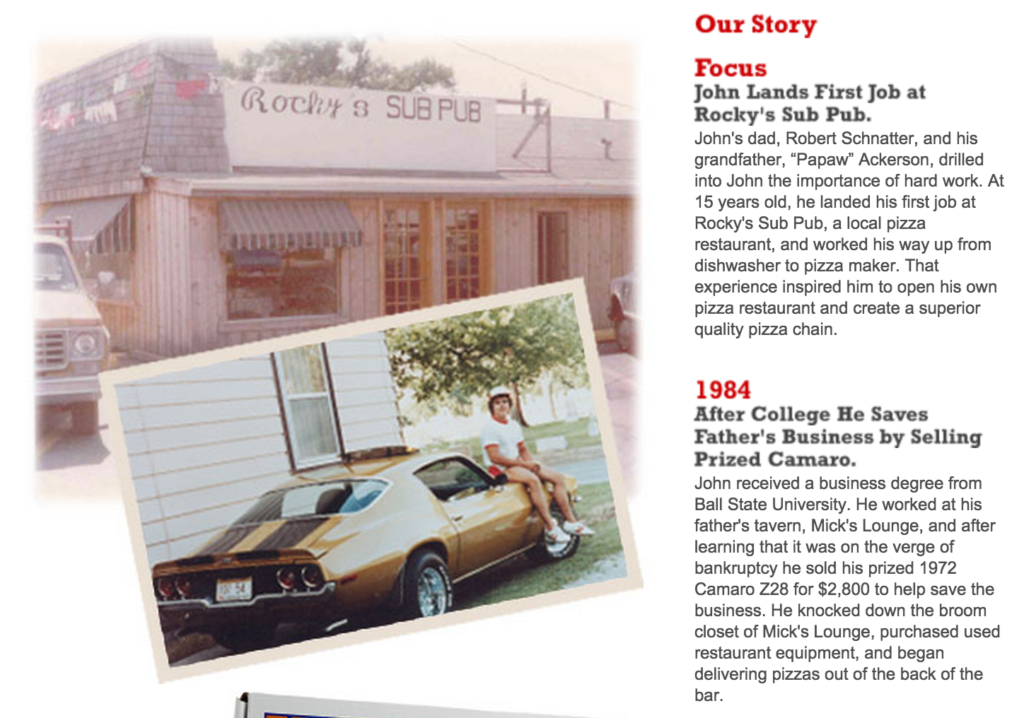 One of the most common struggles you’ll face when building a personal brand is in how to market yourself. I get it. I’ve been there.
One of the most common struggles you’ll face when building a personal brand is in how to market yourself. I get it. I’ve been there.
But there’s one strategy that you can use that automatically sets you apart from the billions of people out there.
Unfortunately, it’s also one of the most under-used strategies when it comes to personal branding. What am I referring to?
Your personal story.
A personal story is a carefully crafted narrative that has one purpose: to create a connection.
Jennifer Aaker, a marketing professor at Stanford and author of The Dragon Fly Effect: Quick, Effective, and Powerful Ways To Use Social Media to Drive Social Change says that neuroscience studies show our brains are wired to better remember stories more than data, facts, and figures.
A compelling story makes you memorable. In a sea of infinite blogs, businesses, and brands, that’s huge.
Before I jump into how to do this, here is an important point:
Personal brands that try to sound “big” and “corporate” are doing it wrong.
If you study marketing, you’ll very quickly realize that big, corporate brands are spending millions — no, billions of dollars — to sound more personal!
Take a look at this screenshot:

Know where this is from? Papa John’s! That’s right — this big, corporate entity has a page on their website that tells an endearing story about how John launched the now-famous pizza chain. (It doesn’t matter if you like Papa John’s or not, I’m just using this to provide marketing insight.)
Big, corporate entities are spending tons of marketing dollars to get what you already have: approachability, relatability, and yes — personality.
“How do I tell my personal story?”
Let’s get into a bit of copywriting. This is the framework I use to write compelling stories for my clients:
1. Pick a story arc.
Think of any epic story you’ve read or watched. Chances are it had some of these “arcs” woven into its narrative:
- Paradise
- Disaster
- Reluctant Hero
- Short Lived Victory
- Devastating Defeat
- Moment of Grace
- Final Victory
Let’s take Lord of the Rings as an example: Frodo Baggins lives in the Shire, a pretty awesome place full of good beer, green pastures, and grand fireworks. (Paradise)
But disaster has befallen Middle Earth, because there’s this powerful ring … and Frodo’s been entrusted with the great task of destroying it! (Disaster + Reluctant Hero)
Frodo experiences a string of short-lived victories, a devastating defeat (Gandalf “dies”) and — spread over two more books / movies — ultimately triumphs.
While you may not have saved Middle Earth from certain doom, you have likely experienced at least one of those 7 arcs. Pick one, then combine it with one of what comes next:
2. Pick a story element.
In addition to the story arcs above, epic stories often contain these elements:
- Hero or heroine
- Villain
- Untold Facts
- Story Behind the Story
- Breaking News
I won’t go into all of these here, but let’s just take “villain” since it’s the most obvious.
In Frodo’s story, the villain isn’t just Sauron and his creepy eye of omniscient stalking, or the orcs, or their master, Saruman. The villain is mankind’s greed and lust for power — an infinitely more dangerous and prevalent evil.
So, the villain in your story doesn’t have to be a person (though it may well be) … it can be cancer, greed, betrayal. There’s no limit.
3. Write your story and tie it to your brand.
Let’s go back to Papa John’s because his copywriters have done a marvelous job tying his story to his brand. You’d be wise to consider their approach:
Names & Dates: It says “Robert Schnatter” and not just “John’s dad”, and also mentions his grandfather by name, “Papaw Ackerson”. We learn that 1984 was a big year, and that his Camaro was a 1972 model that he sold for $2,800.
Most (poor) personal stories would say, “My dad instilled a hard work ethic into me, and I eventually sold my favorite car and started my business.”
Yawn.
Names and dates paint a mental picture of John and his life growing up. It doesn’t matter that the reader doesn’t know what a 1972 Camaro looked like, or who Robert Schnatter was. What matters is that there is at least a framework to create a connection.
Specific Details: John got a business degree from Ball State University, not “John studied business in college.” They name the pub he worked at, and tell us what model his Camaro was, a Z28. They even tell us what closet (broom) John knocked out to start his pizza business.
Passing the “So What?” Test: Imagine your reader saying “So what?” after every sentence you write. John worked at Rocky’s Sub Pub.
So what?
Here’s what: “That experience inspired him to open his own pizza restaurant and create a superior quality pizza chain.”
See how brilliantly this ties into the Papa John’s brand? It’s not spammy at all. Simply imagining your reader saying “So what?” will help you get the most juice out of every sentence you write.
It’s all about connection.
Someone that reads Papa John’s story will have a connection to him beyond pizza. They will view him in a new light the next time they see a commercial, or receive a coupon in the mail. They might think, “He sold his Camaro to take a chance at success, and now look where he is!” or, “He went to Ball State, and so did I!”
Then, somehow, they order a pizza.
Using a personal story in your marketing is subtle, strategic, and incredibly effective.
A number of my clients have told me they hired me directly because of my personal story. They say things like, “I really felt a connection with you after reading your sales page.” Instead of spouting off my copywriting or marketing skills, I simply told my story … which created a connection … and resulted in me writing copy or providing consultations for clients.
Think about that!
Good news is you can do this, too. Use this framework and get started today. Writing your personal story is the first step in building a profitable personal brand — and it’s the fail-safe way to marketing yourself like no one else can.
Want feedback on your marketing personal story? Share below and I’d be glad to chip in a few thoughts.
Liked this post? Check out:
